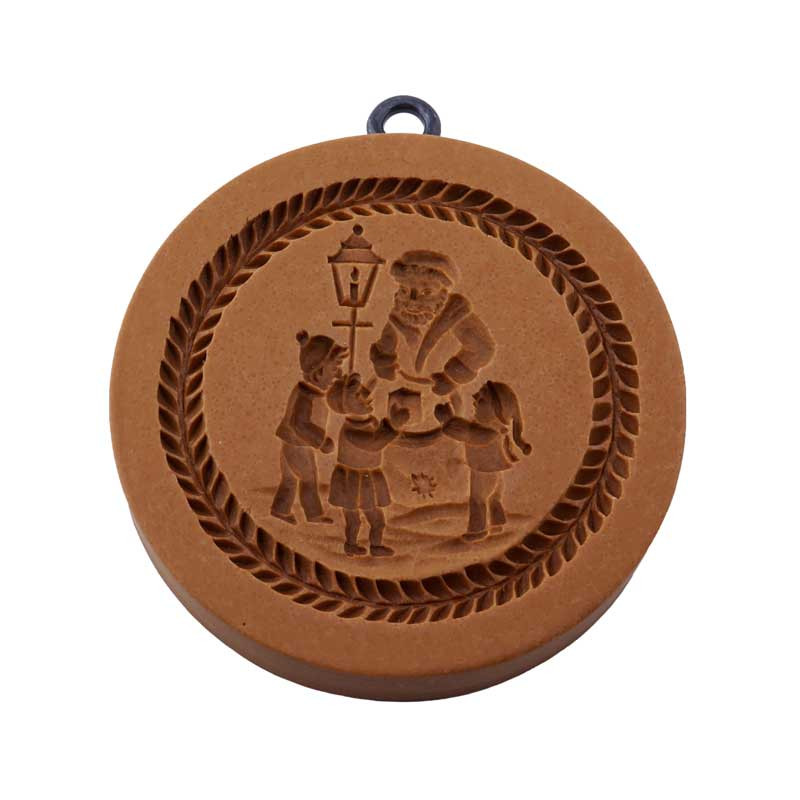



Homemade Tirggel, Anisbrötli, Spekulatius and marzipan deserve a beautiful finish. With a pastry model you apply the desired motif on the dough, then cut out and bake and you have delicious and beautiful pastries.
Data sheet
Especially before Christmas, treats like aniseed rolls, crispy tirggel and aromatic speculoos are available in the stores. But they taste even better when you make them yourself. To give them a particularly great pattern, the dough is embossed with a cookie model made of synthetic resin. These models are food-safe, break-proof and waterproof. In addition, the doughs come off the resin more easily than from wood, for example.
With this model you create a small pastry suitable for any occasion. With the children's gift embossing Tirggel or Anisguetzli are suitable, for example, as a gift or as a souvenir for the hosts of a party. Also particularly beautiful cupcake decorations made of marzipan or fondant succeed in this way.
With a pastry model can be made, for example, own Tirggel, delicious Spekulatius, Anisbrötli or even marzipan with a great pattern. Depending on the dough used, the model should be lightly oiled, floured or sprinkled with a little baker's starch. For thick rolled out masses, the model is pressed into the dough, if you prefer to bake a thin Tirggel, the rolled out dough is pressed into the model.
220 g whole egg
500 g powdered sugar
500 g white flour
1 tbsp anise
Beat the whole egg with the powdered sugar until foamy, then knead in the flour and anise. Form the dough into a ball, cover and let rest a little. Then divide the dough into four pieces. Roll out the first quarter 8 mm thick. To do this, use enough flour so that the dough does not stick to the work surface and the surface becomes nice and silky. Then take the model to hand, if the surface has been well floured before, no additional flouring of the model is necessary. Place the model on the dough and press it in well. Repeat this until the whole dough is embossed. Then cut out or cut out the individual embossments with a suitable cookie cutter.
Proceed in the same way with the other pieces of dough. You can knead the remaining dough together and roll it out again. After kneading it together once or twice, the dough may become a little dry, so the surface pattern will not be equally beautiful. You can still make delicious Chräbeli from the leftovers. All Guetzli are dried for 12-24 hours at room temperature in a dry place without drafts. Then bake them for 12 to 15 minutes in a 150 °C oven on the lowest rack. The aniseed rolls are perfect when they are still very light but baked through. The relief may also be slightly browned.
40 g water
100 g sugar
10 g glucose
80 g almonds
15 g powdered sugar
Boil the water, sugar and glucose. Meanwhile, grind the almonds with the powdered sugar in a blender until very fine. Then empty the boiling syrup to the dry mixture and continue mixing until a homogeneous mass is obtained. Then put the marzipan on a clean and cool work surface, knead it through, spread it out and put it back together. This will create a slightly firmer consistency. Then roll out the marzipan on powdered sugar or baker's starch. Depending on the thickness, press the model into the marzipan or vice versa. Sprinkle the model with a little baker's starch first. For thin marzipan decorations, which can then be placed on a cupcake or a Guetzli, for example, the marzipan is rolled out thinly and placed on the model. With your fingertips, you then press the mass into it. Then carefully remove the mass from the model and cut it out. Apply the marzipan directly or let it dry a little.
Despite oil, flour and baker's starch, it can happen that some dough sticks in the model and the embosser should also be cleaned after use. This is best done immediately after processing the dough, before any residue hardens. The model can be cleaned in water with a brush. If some of the glue has already dried up, the model can be soaked in water until the residue comes off.
 The best aniseed biscuit recipe
The best aniseed biscuit recipe

Homemade Tirggel, Anisbrötli, Spekulatius and marzipan deserve a beautiful finish. With a pastry model you apply the desired motif on the dough, then cut out and bake and you have delicious and beautiful pastries.